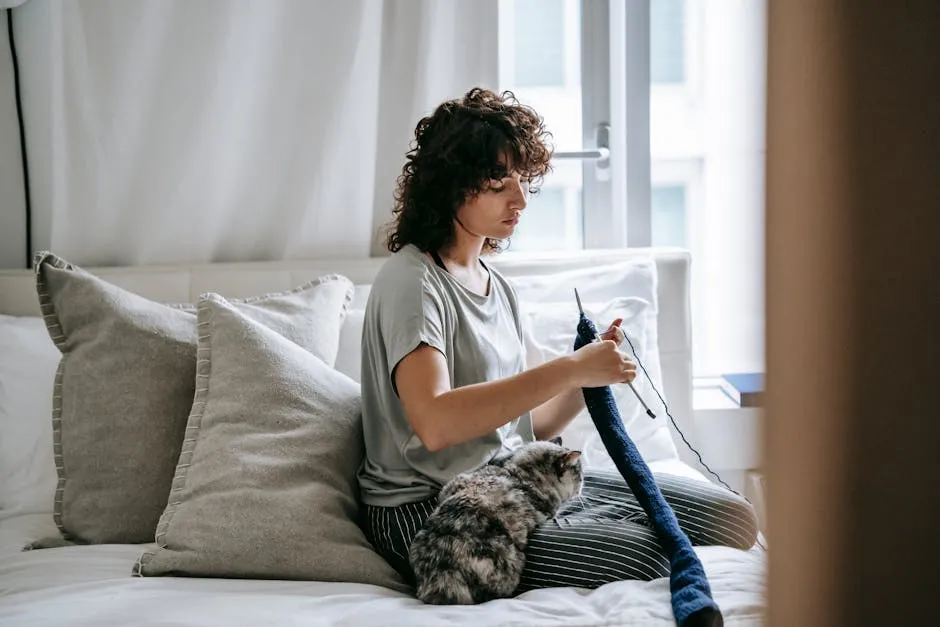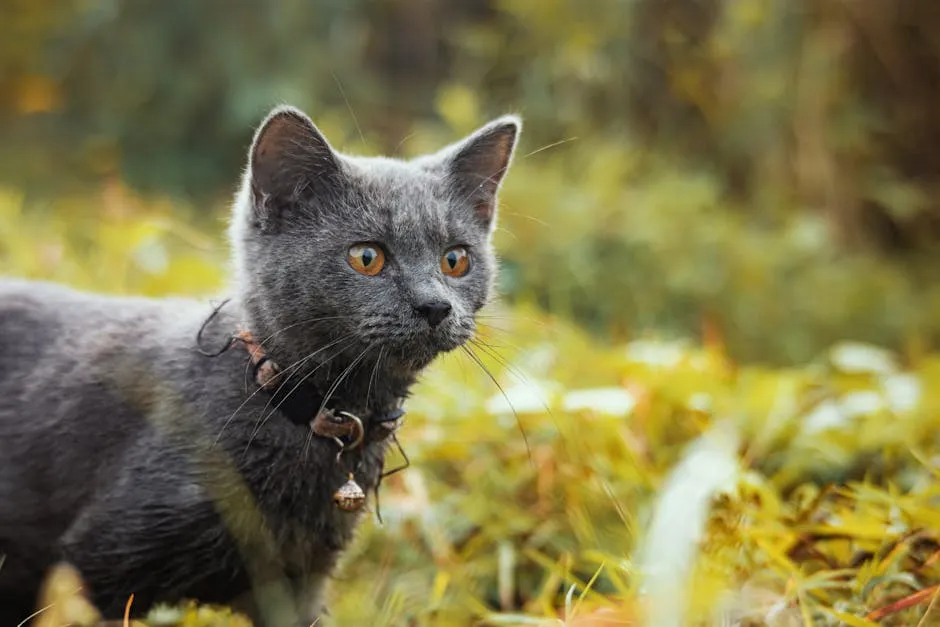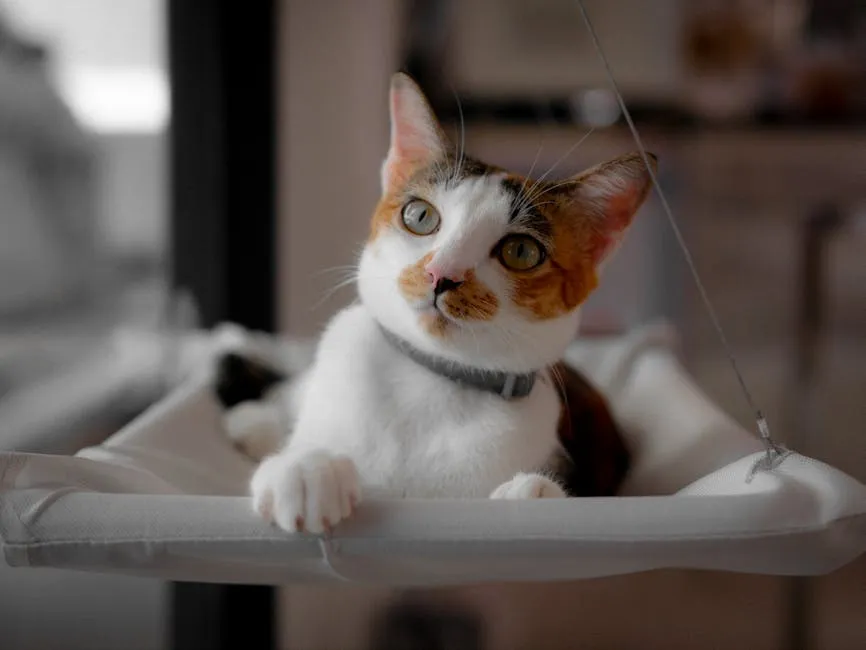
Why Is My Cat Panting? Understanding the Causes and What to Do
Introduction
Have you noticed your cat panting? Unlike dogs, panting in cats is quite rare. This behavior often signals an underlying issue. In this article, we’ll explore the reasons behind cat panting and what steps to take if you observe this concerning behavior. If you want to create a calming environment for your furbaby, consider using a Cat Pheromone Diffuser. It’s like a spa day for your cat!
Summary and Overview
While some panting can be normal after exercise or due to heat, consistent panting is usually a cause for concern. Understanding the context is crucial. Factors like the cat’s environment and overall health play a significant role. We’ll cover common causes, symptoms to watch for, and actions you can take when your cat is panting. You’ll find clear headings and sections to help you navigate this important information easily.
Common Causes of Panting in Cats
1. Overheating
Cats struggle to cool themselves down. They primarily sweat through their paw pads, which isn’t very effective. When overheated, cats may pant to release heat. Look for signs like excessive panting or drooling. If you suspect overheating, move your cat to a cooler area immediately. Offer water and monitor their condition closely to ensure they recover. A great way to keep them hydrated is with a Cat Water Fountain that encourages them to drink more!
2. Stress and Anxiety
Stressful situations can trigger panting. Common stressors include travel or loud noises. Signs of stress in cats include hiding or excessive vocalization. To help calm a stressed cat, create a safe space or use pheromone diffusers. Removing the stressor can significantly help your feline friend feel better. If you’re traveling, a Cat Carrier Backpack can make the journey a lot more comfortable.
3. Physical Activity
Vigorous play can lead to temporary panting. Kittens, in particular, may pant after running around. This is usually normal and should resolve within a few minutes. However, if your cat continues to pant excessively after play, monitor them for any unusual signs or symptoms. To keep their playtime engaging, a Cat Toy Variety Pack is a fantastic way to keep them entertained!
4. Respiratory Issues
a. Asthma
Asthma can cause significant breathing difficulties in cats. Symptoms include coughing, wheezing, and increased respiratory rate. If you suspect asthma, consult your veterinarian for a proper diagnosis and treatment plan. You can also educate yourself further with a Feline Asthma Guidebook.
b. Respiratory Infections
Common respiratory infections can lead to panting. Symptoms often include sneezing, nasal discharge, and coughing. If your cat shows signs of a respiratory infection, it’s essential to seek veterinary care promptly to avoid complications. Having a Cat First Aid Kit at home can be a lifesaver!
c. Other Respiratory Diseases
Conditions like pneumonia, lungworms, and heartworm can also cause panting. Symptoms may vary, but they often include difficulty breathing and lethargy. If you notice any concerning signs, contact your veterinarian immediately.
5. Cardiac Issues
Heart disease can lead to panting in cats. Common conditions like hypertrophic cardiomyopathy often go unnoticed until symptoms arise. If your cat pants and displays lethargy or pale gums, consult your vet right away. To keep your cat healthy, consider reading a comprehensive Cat Health Book.
6. Anemia
Anemia affects oxygen delivery in the body, leading to panting. Look for signs like lethargy or pale gums. If you suspect anemia, seek veterinary intervention to address the underlying cause.
7. Pain and Injury
Pain can manifest as panting in cats. Signs of pain may include hiding, aggression, or changes in eating habits. If you suspect your cat is in pain, it’s crucial to consult your veterinarian for proper evaluation and treatment. A Cat Nail Clippers can help you keep their claws in check and prevent any accidental injuries!
8. Exposure to Toxins
Ingesting toxic substances can cause panting. Common toxins include certain plants and foods like onions or garlic. If you suspect poisoning, seek immediate veterinary care to ensure your cat receives the necessary treatment. A Pet Odor Eliminator Spray can help keep your home free of any lingering smells related to accidents!
9. Other Conditions
Less common causes of panting include neurological disorders or hormonal imbalances. These can lead to abnormal breathing patterns. Be vigilant for any unusual behavior in your cat and consult your vet if necessary.
Understanding the reasons for panting in cats is essential for their health. Always monitor your cat closely, and consult a veterinarian if you have concerns about their breathing or behavior. Early intervention can make a significant difference. Additionally, consider investing in a Pet Camera to keep an eye on your furry friend while you’re away!
When to Seek Veterinary Care
If your cat is panting, it’s important to take it seriously. Certain symptoms warrant immediate attention. Look for signs like difficulty breathing, labored breaths, or rapid heart rate. Blue or pale gums can indicate a lack of oxygen and should raise alarm bells.
Other concerning symptoms include lethargy, weakness, or loss of appetite. If panting persists for more than a few minutes, don’t hesitate to contact your veterinarian. Prompt diagnosis can lead to effective treatment and a better outcome for your feline friend. If you’re worried about keeping track of their health, a Pet GPS Tracker can give you peace of mind!
Always remember, it’s better to err on the side of caution. A veterinarian can provide the necessary guidance and care. Pay attention to your cat’s behavior, and don’t wait if something feels off. Your cat depends on you to recognize when they need help.
How to Help a Panting Cat
Noticing your cat panting can be alarming. Here’s how to assist them effectively.
First, if your cat is overheating, cooling them down is critical. Move your cat to a shaded, cool area. Offer fresh water to help rehydrate them. You can also gently wet their ears and paws with a cool, damp cloth. Avoid using ice-cold water, as it can shock their system. If your cat enjoys lounging, a Cat Cooling Mat can provide a refreshing spot to relax!
Creating a calm environment is essential for stressed cats. Dim the lights and reduce noise. Provide a cozy space with familiar bedding. Consider using calming products like pheromone diffusers or sprays. These can help soothe anxious felines. A Cat Calming Spray can work wonders in these situations!
Monitoring your cat’s condition closely is vital. Keep an eye on their breathing rate and behavior. If panting persists for more than a few minutes, or if you notice other troubling symptoms, contact your veterinarian. It’s better to be cautious when it comes to your pet’s health.
By taking these steps, you can help ensure your cat remains comfortable and safe. If you want to keep your cat’s dental health in check, consider using a Cat Dental Care Kit!
Conclusion
In summary, while panting in cats can sometimes be normal, it often signals an underlying issue. Remember to act quickly if your cat shows persistent panting or other concerning signs. Always consult a veterinarian for any health-related concerns. Being vigilant and proactive about your cat’s health can make a significant difference in their well-being. And let’s not forget about their comfort; a cozy Cat Bed with Removable Cover can do wonders for their relaxation!
FAQs
Is it normal for cats to pant?
Panting can be normal after exercise or in hot weather. However, if your cat pants without obvious reasons, it may indicate a health issue.
What should I do if my cat is panting?
Monitor your cat’s condition and ensure they are in a cool, calm environment. If panting continues or worsens, contact your veterinarian.
Can panting in cats indicate pain?
Yes, panting can be a sign of discomfort or pain. If your cat is panting and showing other signs of distress, seek veterinary attention.
How can I tell if my cat is overheating?
Look for signs like excessive drooling, rapid panting, or lethargy. If you notice these symptoms, immediately move your cat to a cooler area.
Are there breeds more prone to panting?
Some flat-faced breeds, like Persians and Himalayans, may pant more due to their unique anatomy.
What are common treatments for panting-related conditions?
Treatments vary based on the cause but may include medications, respiratory therapy, or lifestyle changes to manage underlying conditions.
Did you know that respiratory diseases affect about 5% to 10% of cats? These conditions can lead to serious health issues if not addressed early. For instance, feline asthma is becoming increasingly common, with studies showing that approximately 1% to 5% of cats are diagnosed with this chronic condition. Understanding why your cat may be panting can help you take necessary actions.

Early diagnosis is crucial. Research indicates that timely treatment can improve outcomes significantly. For example, cats diagnosed with respiratory infections early on have a higher recovery rate compared to those treated later. This highlights the importance of monitoring your cat’s breathing and recognizing unusual patterns, such as panting, which could signal a more serious issue. If you want to ensure your cat’s safety while they roam outside, consider getting a Cat Collar with ID Tag.

When considering your cat’s health, it’s essential to keep an eye on feline breathing issues. Understanding the panting causes can help you act quickly. If you’re ever in doubt, don’t hesitate to contact an emergency vet. Providing feline stress relief is also crucial in calming your furry friend. Remember, maintaining respiratory health in cats is vital for their overall well-being. A Cat Behavior Handbook can provide insights on keeping your cat happy and healthy!

Want to stay informed about your cat’s health? Subscribe to our newsletter for updates on pet care and health tips.
Looking for more resources? Check out our guides on cat care and health monitoring to ensure your feline friend stays happy and healthy!
Please let us know what you think about our content by leaving a comment down below!
Thank you for reading till here 🙂
All images from Pexels




